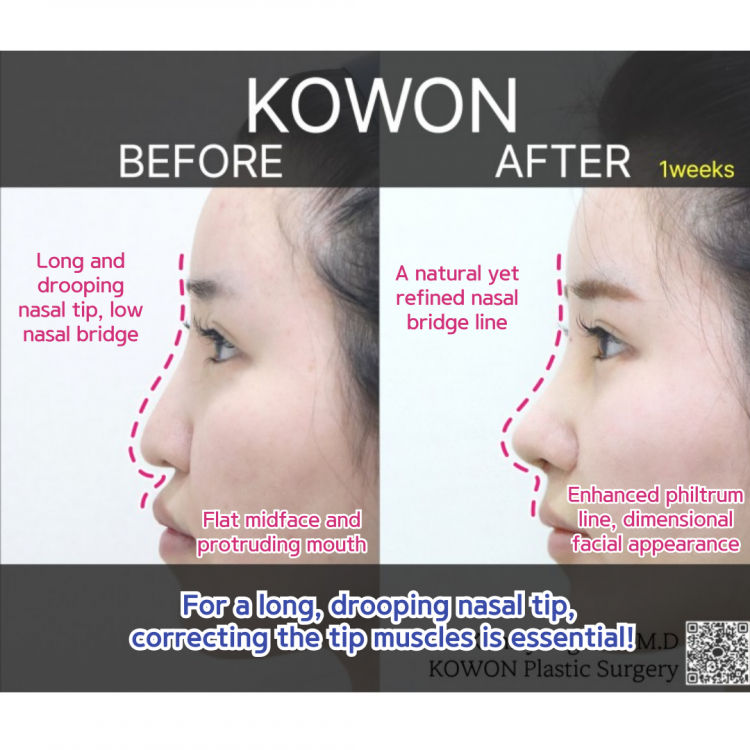코첫수술 How to Lift and Refine a Long, Drooping Nasal Tip Effectively
페이지 정보
작성자 코원성형외과 댓글 0건 조회 42회 작성일본문
Hello, this is Dr. Hyungtaek Kim from Kowon Plastic Surgery.
Today, I’d like to introduce a case involving a patient with a long, drooping nasal tip.
This patient was particularly concerned about how the nasal tip appeared even longer when smiling, making the nose look more elongated than it actually was.
Many patients with a hooked nose (arrow-shaped tip) or a naturally long nose often share similar concerns.
Let’s go into the details and explain how this can be addressed.
Looking at the pre-surgery photos, you can see that the nasal tip is noticeably long in proportion to the overall facial balance, with a downward angle.
This makes the nose appear even longer than it actually is and gives the midface a lengthened appearance.
In such cases, the key is to lift the nasal tip to create a soft, natural curve. By raising the highest projection point of the tip, we can achieve a semi-upturned nose (straight-to-gently-upturned shape).
This technique helps the nose appear shorter and also creates the illusion of a more balanced and proportionate midface.
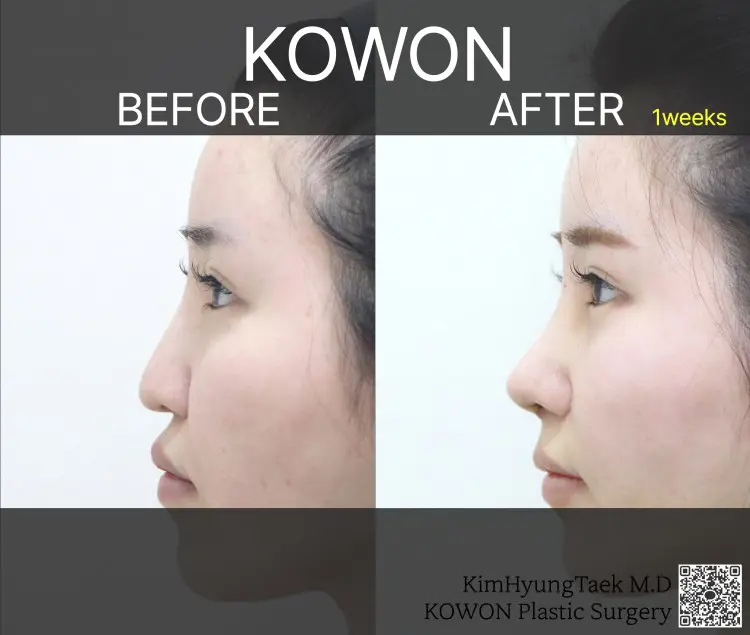
From the side profile, the patient’s mouth appears more protruded, and the chin looks larger in proportion.
By elevating the nasal bridge and performing nasolabial angle correction, we were able to improve the angle between the nose and the upper lip (philtrum angle).
As a result, the mouth appears less protruded, and the overall side profile looks more refined and harmonious.
At our clinic, we refer to this as the J-Curve technique, which involves softening the columella and adjusting the philtrum angle to achieve a naturally balanced look.
Simply increasing the height of the nose alone wouldn’t create such a dramatic transformation—it’s the combination of precise adjustments that enhances overall facial harmony.
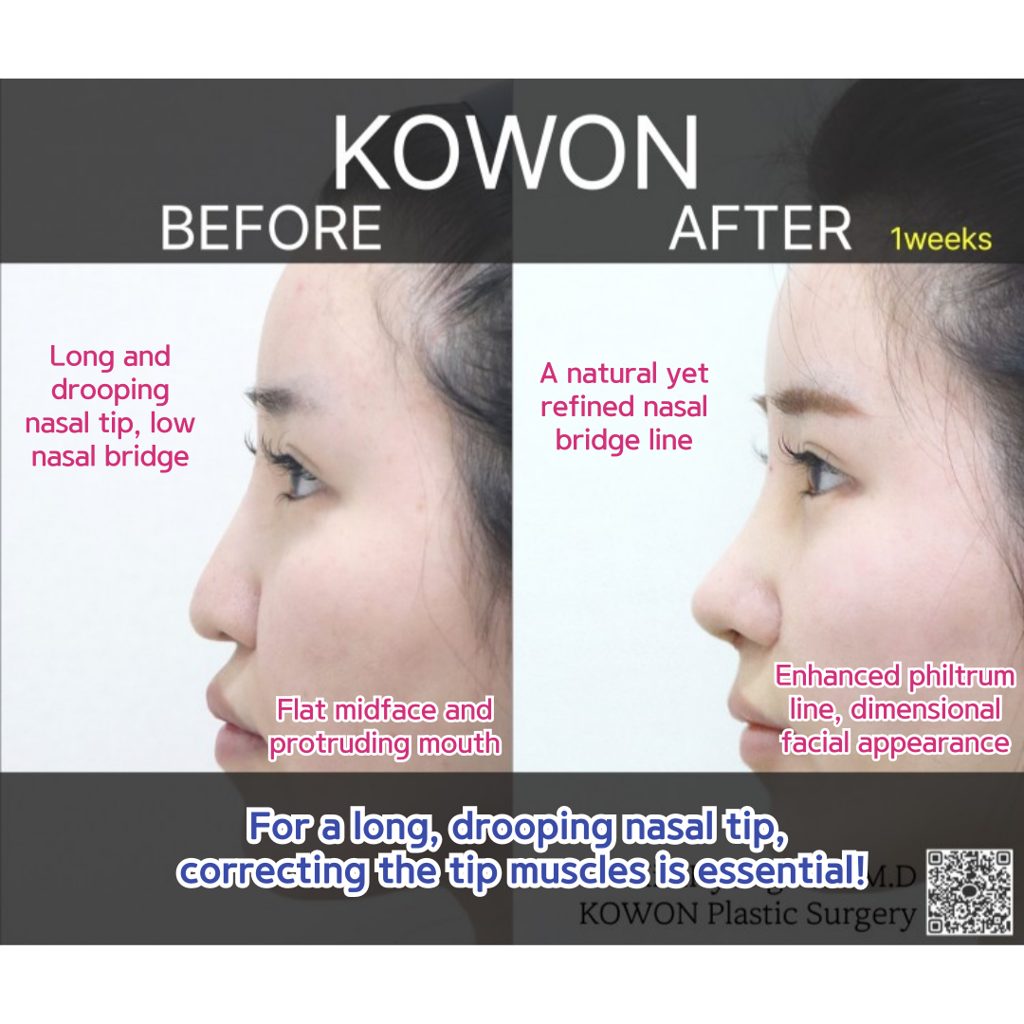
To better visualize the transformation, we have drawn guiding lines on the image. You can clearly see the improvements in both the nasal line and height.
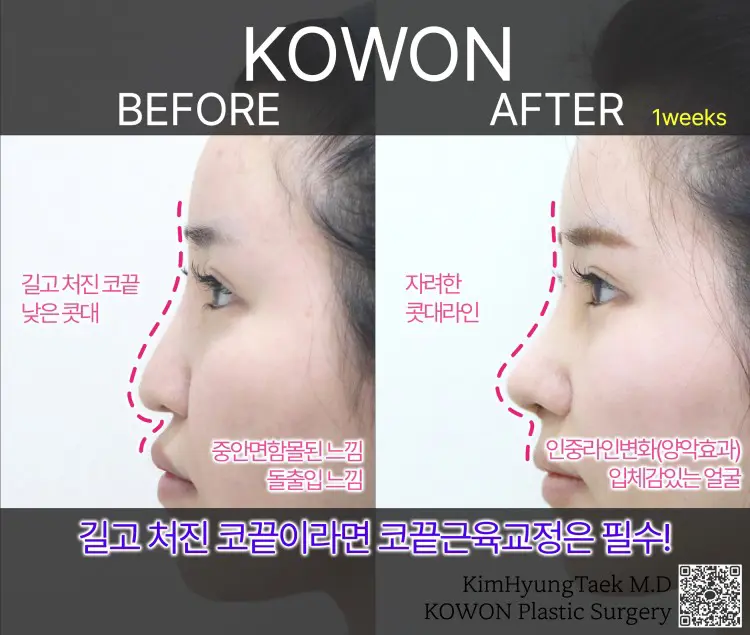
Now, let’s take a look at the front view.
In the pre-surgery photo, the patient is slightly smiling. When smiling, the depressor septi nasi muscle, which pulls the nasal tip downward, and the levator labii superioris alaeque nasi muscle, which lifts the upper lip sideways, come into action. As a result, the nasal tip appears longer, and the nose seems wider.
For individuals with particularly strong muscle activity, the difference between a resting face and a smiling face can be quite dramatic.
Even after a well-performed rhinoplasty, some patients find that their nasal tip droops again over time or still appears elongated when smiling, causing ongoing aesthetic concerns.
In such cases, nasal tip muscle correction can be performed alongside rhinoplasty to help achieve a more stable and refined result.
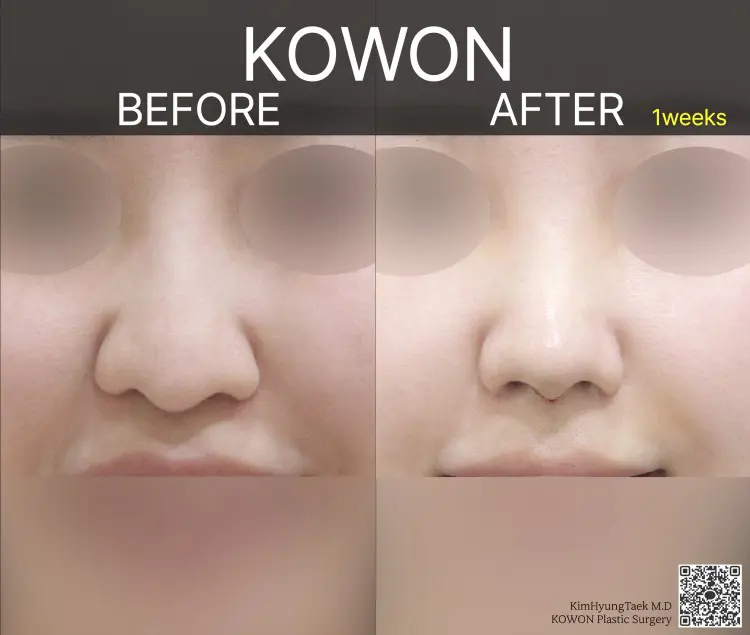
We’ve drawn guideline markings to highlight the difference, and you can clearly see how the nose appears significantly shorter after surgery.
Both photos were taken while smiling.
At first, smiling may feel slightly unnatural due to the muscle correction, but as time passes, the muscles will adjust and adapt naturally,
leading to a more comfortable and refined expression.
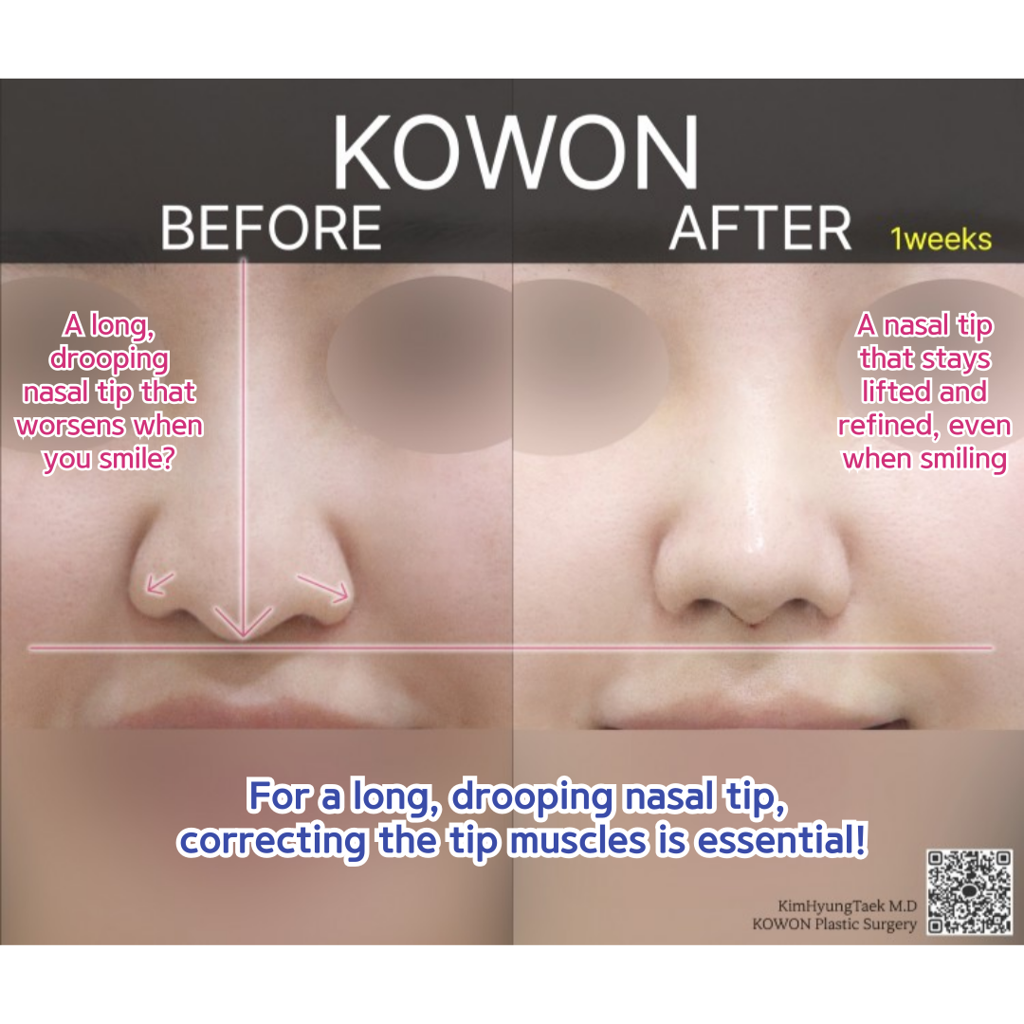
From the side profile, you can see how the overall impression has changed from a tired and melancholic look to a brighter, more vibrant appearance.
A long, downward-pointing nasal tip can sometimes create a sad or aged look.
By refining the tip to be rounder and slightly lifted, the face appears more youthful and refreshed.
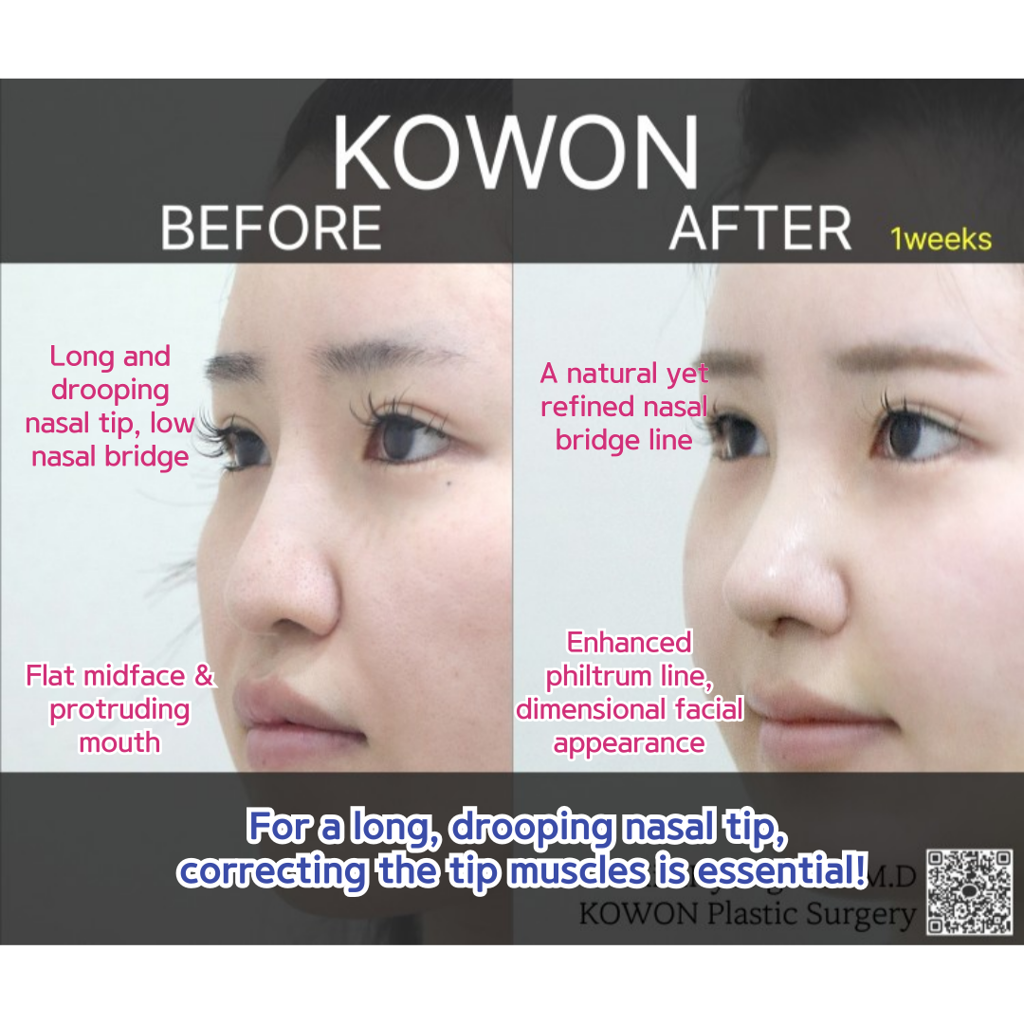
댓글목록
등록된 댓글이 없습니다.







